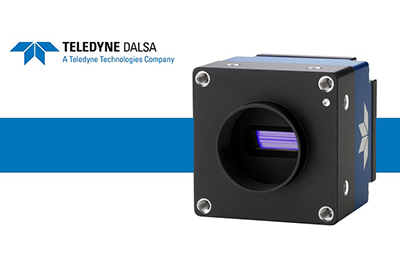
Machine vision and image processing systems have long been able to inspect complex or detailed objects for a multitude of different defects, or accurately measure variously sized and shaped materials, but mostly in the visible spectrum. Now vision systems are evolving beyond the capabilities of the human eye. And are now bringing that same accuracy to the spectrums outside the visible range.
SWIR Used for Visual Inspection
Short Wave Infrared (SWIR) covers the wavelengths in the electromagnetic spectrum, ranging from about 900nm to 1700nm. Invisible to humans, but now visible to machine vision cameras, this narrow band can capture images that are equally as important to those being seen in the visible range. Identifying abnormalities or defects that may have gone previously undetected.
The sensors used in SWIR cameras are comprised of a different material than those used in the visible light sensors. Most visible sensors today are manufactured using a silicon base compound, The SWIR sensors use an InGaAs (indium gallium arsenide) material, which gives it a different set of properties that allows it to see into the non-visible range.
Benefits of SWIR Imaging Over Visible Light
One major benefit of SWIR cameras is that in many cases no illumination is needed to capture an image. Their extreme photosensitivity has the capability to detect singular photons. But in certain applications where lighting is necessary, the use of Halogen light is most effective. SWIR cameras can penetrate dust, fog, and smoke in the air to provide superior images compared to visible light cameras.
SWIR has advantages over conventional thermal energy imaging as well. Since SWIR has properties like reflection and contrast, it can be used for identification purposes. SWIR also captures data through specially coated glass. This makes lenses much more affordable compared to MWIR and LWIR lenses that are made out of more expensive materials such as germanium.
Applications for SWIR Imaging
Since SWIR can be used to see through surfaces that are not transparent with visible light, it can be used to check fill levels, read tamperproof security codes, and find otherwise hidden moisture. SWIR can be used for nondestructive inspection, such as confirming the presence of a needle under a syringe’s protective cap.
Water is transparent in visible light. But in SWIR ranges, it appears black. This makes SWIR ideal for inspection in the food and beverage, textiles, and woodworking industries. Auto manufacturers use SWIR to confirm that coatings have dried. Food processors use SWIR to identify bruised and damaged fruit. And growers use SWIR to gauge water content in plants.
Teledyne DALSA SWIR Cameras
What makes Teledyne’s new SWIR cameras so unique in the marketplace, is it introduces SWIR technology to Line Scan cameras. This will allow many industries that require the speed of a line scan camera, to now have the benefits of using SWIR to identify previously unseen defects. Also of key importance is, Teledyne’s sensor is uncooled, giving it much more flexibility as a result of its smaller package size.
The image quality of SWIR cameras varies by manufacturer. Imagers must be optimized with proper sensor cooling, precise sensor temperature monitoring, and image correction built into the camera. Teledyne DALSA’s GigE SWIR line scan cameras feature a cutting-edge InGaAs sensor in a compact package that can be used for a wide variety of machine vision applications.
Teledyne recently introduced a 512 short-wave SWIR camera to its already existing 1K model. It offers exceptional responsivity and low noise. It features 25 µm pixels, a 40 kHz line rate, power over Ethernet (PoE), and more HDR (high dynamic range) and cycling modes, as well as its programmable I/Os allowing it to be used for everything from food inspection to mineral sorting to solar wafer inspection.
Let the specialists at Phase 1 Technology Corp help you find the best camera for your SWIR imaging solution.
